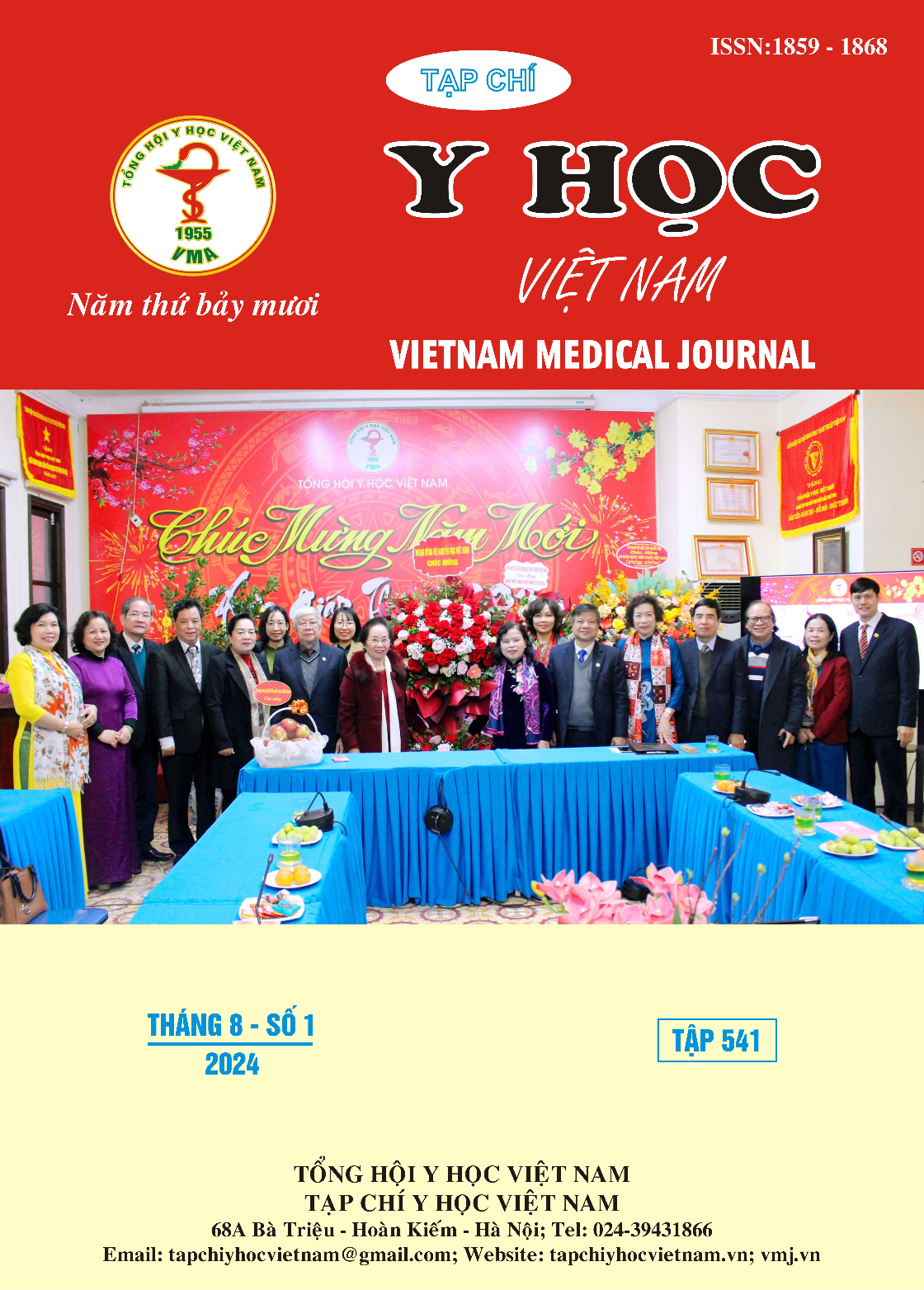SOME CHARACTERISTICS OF CLINICAL, PARACLINICAL AND RESULTS OF TREATMENT OF VENTILATION-ASSOCIATED PNEUMONIA CAUSED BY MULTIDRUG-RESISTANT ACINETOBACTER BAUMANII AT BAC LIEU GENERAL HOSPITAL
Main Article Content
Abstract
Background: Ventilator-associated pneumonia (VAP) is a type of hospital-acquired pneumonia, especially most common in intensive care units, occurring in mechanically ventilated patients during treatment. Objectives: Describe the characteristics, treatment results and antibiotic resistance of bacteria in patients with VAP caused by multi-drug resistant Acinetobacter baumannii. Research subjects and methods: Cross-sectional descriptive study, clinical intervention without control group in 32 patients with VAP caused by multi-drug resistant A. baumannii at Bac Lieu General Hospital from April 2023 to January 2024. Results: The rate of VAP caused by multi-drug resistant A. baumannii was 37,2%, the average age of patients was 68,6±19,1 years old. Using sedatives and antibiotics before diagnosing pneumonia are the two most common risk factors for VAP caused by A. baumannii. Patients with early VAP had fewer days of mechanical ventilation compared to late VAP (p<0,001). Rate of death, serious illness, return home 68,7%; The rate of recovery and transfer to the clinical deparment is 15,6%. A. baumannii is also 34,4% sensitive to the antibiotic Colistin and 75,0% sensitive to Ampicillin/Sulbactam. Conclusion: VAP caused by multir-drug resistant A.baumanii has a high frequency of morbidity and mortality. With increasing antibiotic resistance, A. baumanii is becoming a burden in intensive care units.
Article Details
Keywords
ventilator-associated pneumonia, Acinetobacter baumanii, endotracheal intubation, intensive care - toxicology
References
2. Hà Tấn Đức, Nguyễn Văn Yên (2011), "Sự đề kháng kháng sinh của vi khuẩn gây viêm phổi bệnh viện, viêm phổi thở máy, viêm phổi liên quan đến chăm sóc y tế tại khoa Hồi sức tích cực", Tạp chí Lao và Bệnh phổi 6(3), tr. 80-81.
3. Kalil AC, Metersky ML, Klompas M, et al. (2016), "Management of Adults With Hospital - acquired and Ventilator- associated Pneumonia: Clinical Practice Guidelines by the Infectious Diseases Society of America and the American Thoracic Society", ClinInfect Dis., 63(5):e61- e111.
4. Nguyễn Viết Quang (2013), "Tỷ lệ vi khuẩn kháng thuốc ở bệnh nhân viêm phổi do thở máy tại phòng Hồi sức sau mổ A bệnh viện Trung ương Huế", Tạp chí Y học thực hành, Số 12(889), tr.36-39.
5. Almomani B.A., McCullough A., et al. (2015), "Incidence and predictors of 14-day mortality in multidrug-resistant Acinetobacter baumannii in ventilator- associated pneumonia", J Infect Dev Ctries, 9(12), pp. 1323-1330.
6. Koulenti D., Tsigou E., et al. (2016), "Nosocomial pneumonia in 27 ICUs in Europe: perspectives from the EU-VAP/CAP study", EU-VAP/CAP Study Investigators, Electronic, pp. 152-159.
7. Geetika R., Shweta S. (2017), " Ventilator associated pneumonia in the ICU: microbiological profile", Journal of Bacteriology & Mycology: Open Access, Volume 4 (Issue 5), pp. 165-168.
8. Ju M., Hou D., et al. (2018), "Risk factors for mortality in ICU patients with Acinetobacter baumannii ventilator-associated pneumonia: impact of bacterial cytotoxicity", J Thorac Dis, 10(5), pp. 2608-2617.


